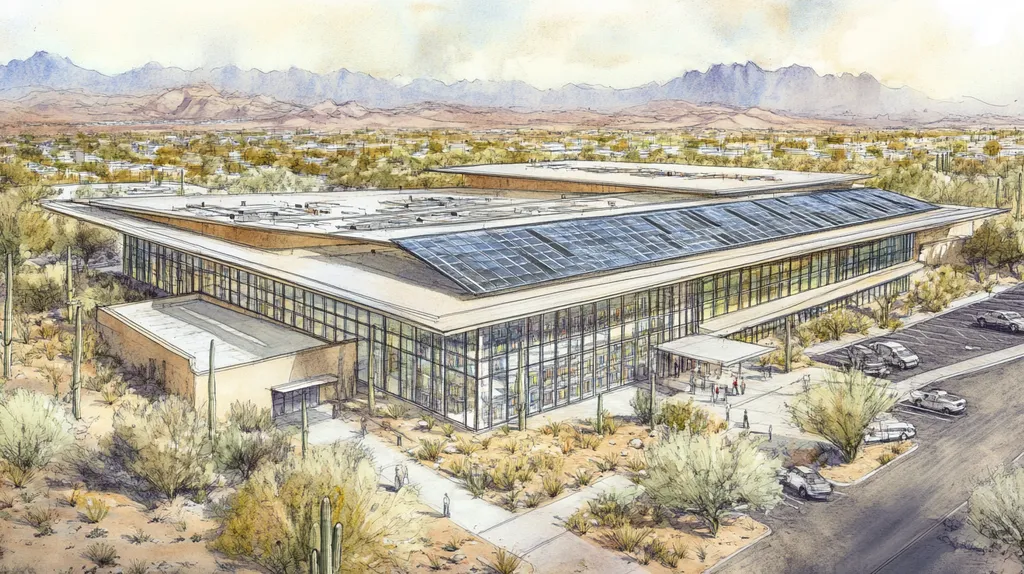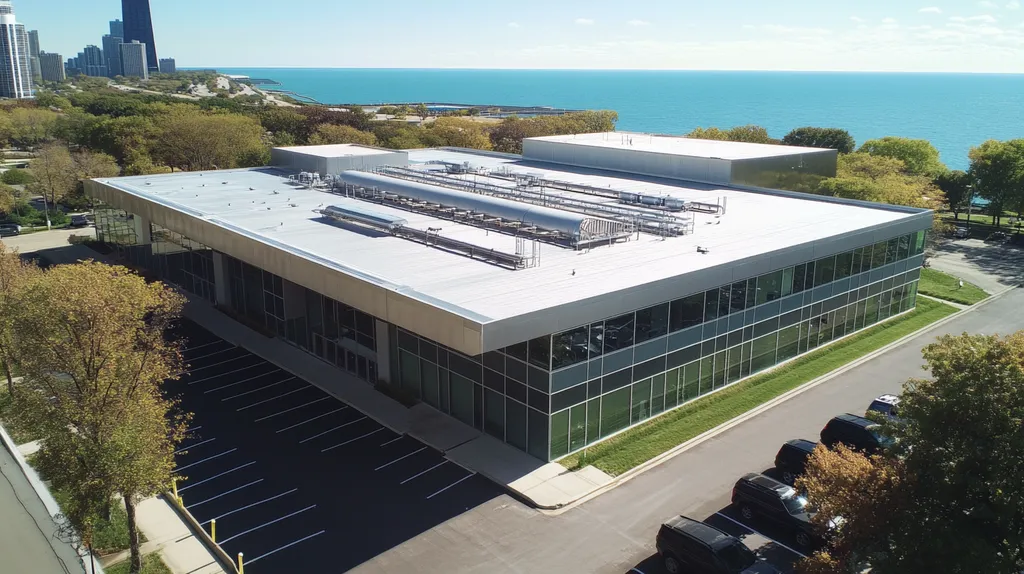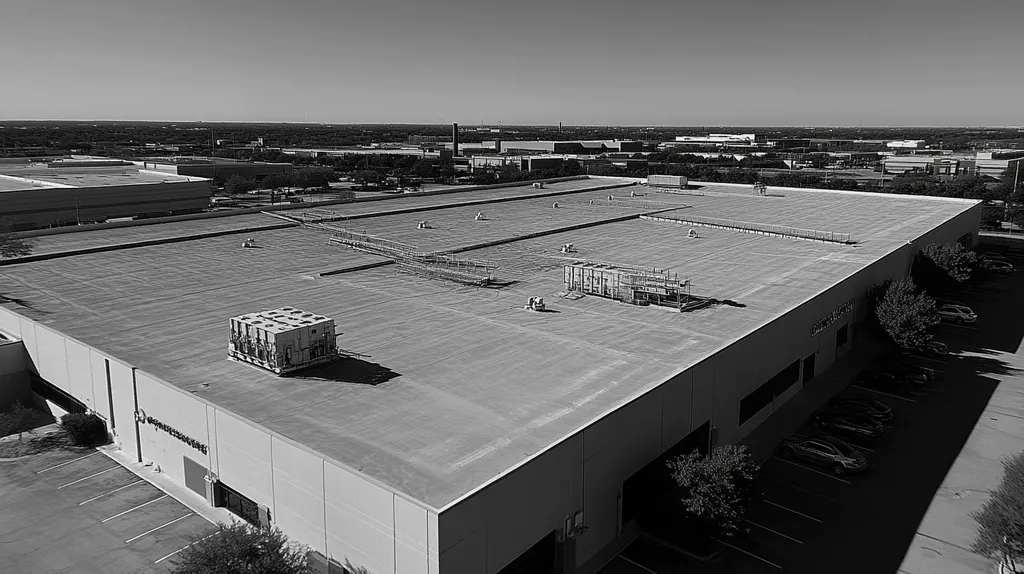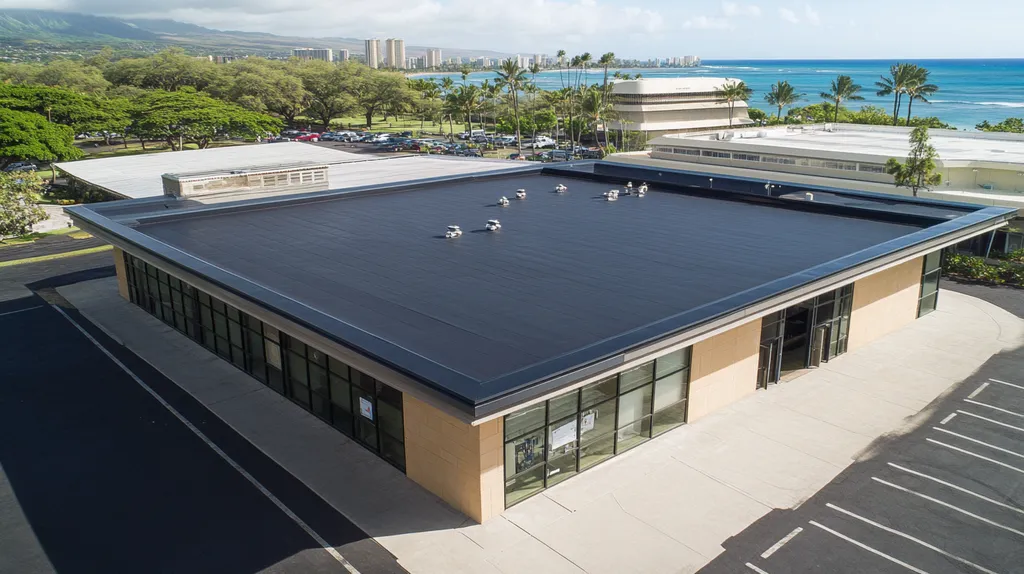Poor ventilation in commercial roofs costs U.S. businesses over $3.3 billion annually in energy waste and structural repairs. Studies show that 40% of roof failures stem directly from inadequate ventilation maintenance.
For facility managers and property owners, understanding proper ventilation maintenance isn’t just about preventing damage – it’s about protecting their investment and ensuring operational efficiency.
This comprehensive guide examines essential aspects of commercial roof ventilation maintenance, from fundamental concepts through optimization strategies, providing actionable solutions for extending roof life and reducing operating costs.
SECTION 1: FUNDAMENTAL CONCEPTS
Understanding the fundamentals of roof ventilation isn’t just a good idea; it’s essential for the health and longevity of commercial roofing systems. When ventilation fails, excess moisture can accumulate, leading to serious structural problems and inflated energy bills. For many businesses, unexpected repairs can strain budgets, making knowledge of effective ventilation practices a necessary investment in their property’s performance and durability.
Importance of Roof Ventilation
Roof ventilation is pivotal in maintaining the integrity of commercial buildings. Proper airflow regulates temperature, limits moisture accumulation, and prevents deterioration of roofing materials. A roof lacking adequate ventilation not only becomes more susceptible to mold growth but also faces an increased risk of structural failure.
Consider this: a well-ventilated roof can reduce cooling costs by as much as 20%. This not only lowers operational expenses but also benefits the environment. Furthermore, when roof materials are well-ventilated, they can last longer, postponing the need for costly replacements.
Regular inspection and maintenance of ventilation systems are crucial. Property owners should routinely ensure that vents are clear and functioning optimally. By prioritizing these inspections, they can preempt potential failures and protect their investments.
In conclusion, investing in effective roof ventilation is a fundamental aspect of responsible building management, not simply an option.
Ventilation Codes and Standards
Adhering to ventilation codes and standards is vital for the performance and safety of commercial roofs. These codes establish minimum ventilation requirements, ensuring that roofs function as intended without compromising safety. Property owners should familiarize themselves with local regulations to avoid potential penalties and ensure compliance.
The American Society of Heating, Refrigerating and Air-Conditioning Engineers (ASHRAE) issues guidelines widely referenced in the industry. Following these standards is essential for optimizing air circulation while also reducing energy consumption.
Neglecting these codes may lead to hefty fines and the need for corrective work later on. Additionally, compliance not only enhances air quality but also contributes to the overall safety of building occupants.
By understanding and implementing these codes, property owners engage in responsible management that supports the longevity of their roofing investments.
Climate Considerations for Ventilation
Climate significantly affects the efficacy of roof ventilation, making it a key factor for property owners. In warmer areas, enhanced airflow aids in temperature regulation, significantly cutting down energy costs. On the flip side, in colder climates, controlled ventilation is essential for preventing condensation, ice dam formations, and unwanted water infiltration.
Property owners should evaluate local climate conditions to design ventilation strategies tailored to their environment. For instance, operable vents can offer enhanced control during changing seasons, allowing for adjustments as temperatures fluctuate.
Being aware of climate impacts promotes a proactive approach to roof maintenance. Local weather patterns will inform the frequency of inspections and maintenance actions necessary for optimal performance of ventilation systems.
In summary, incorporating climate considerations into ventilation planning not only boosts building efficiency but also ensures long-term protection for property investments.
SECTION 2: SYSTEM COMPONENTS
Effective roof ventilation is not just beneficial; it’s imperative for maintaining both the integrity and lifespan of commercial roofing systems. A lack of proper ventilation can lead to moisture build-up, skyrocketing energy costs, and potentially severe structural damage. Research shows that proper ventilation can extend a roof’s life by mitigating risks such as mold growth and thermal damage. This section will explore the critical components of ventilation systems that enable them to perform optimally.
Inlet Ventilation Solutions
Inlet ventilation solutions play a vital role in letting fresh air circulate into the roofing system. They ensure the necessary airflow for maintaining a balanced indoor temperature while allowing stale air to escape. Common inlet options include soffit vents and ridge vents, which effectively facilitate cross-ventilation. However, poorly integrated components can lead to blockages, reducing their effectiveness.
Building codes often specify the required amount of inlet ventilation based on the size and type of roof. Not adhering to these standards can decrease airflow and increase humidity levels. To maintain optimal functionality, regular inspections are essential to keep these inlets unobstructed and clean.
Choosing high-quality inlet solutions also boosts energy efficiency. By improving ventilation, reliance on HVAC systems decreases, leading to lower energy bills. Property owners should weigh the long-term cost savings against the initial investment of a well-ventilated roof.
It’s crucial to remember that a poorly designed inlet system can create issues like backdrafting or excessive heat buildup. Selecting the appropriate combination of ventilation components can mitigate these risks while enhancing overall system performance.
Exhaust Ventilation Options
Exhaust ventilation is essential for removing hot, stagnant air trapped within commercial buildings. Effective exhaust solutions relieve pressure differences that can inadvertently draw air into unwanted areas, resulting in energy loss and inefficiency. Common exhaust options include roof vents, turbine vents, and power vents.
When choosing an exhaust system, property owners must consider the volume of air that needs expelling and the specific environmental conditions of their region. For example, areas with heavy snowfall may require specialized exhaust systems designed to prevent ice-related blockages, ensuring effective airflow throughout the year.
Moreover, ineffective exhaust systems can lead to dangerous accumulations of harmful gases, compromising the safety and health of building occupants. Regular maintenance of exhaust systems not only improves air quality but also promotes a safer indoor environment.
A balanced ventilation strategy hinges on the integration of exhaust systems with inlet solutions. Proper alignment ensures stable airflow and peak performance, emphasizing the importance of consistent maintenance practices.
Integration with Roofing Materials
Integrating ventilation systems with roofing materials is crucial for optimizing performance. The roofing materials chosen can affect how well the ventilation operates. For example, reflective coatings can enhance energy efficiency while aiding airflow beneath the roof’s surface.
Ventilation systems must also be compatible with roofing materials to ensure effective moisture management. Certain materials may require specialized vents to guarantee adequate airflow and limit moisture entrapment. Consulting with roofing professionals can help ensure proper integration for functionality.
Additionally, the placement of vents in relation to roofing materials is critical for performance. Poorly aligned or incorrectly placed vents can lead to inefficiencies and heightened risk of damage. Engaging experts during installation can help prevent costly errors.
Understanding how ventilation and roofing materials interact enables informed decisions that enhance the entire system’s effectiveness. This integrated approach not only improves ventilation success but also contributes to the longevity of the roofing system itself.
SECTION 3: IMPLEMENTATION METHODS
Effective commercial roof ventilation is not merely a recommendation; it’s essential for preserving building integrity and achieving energy efficiency. Without proper ventilation, roofs can suffer from moisture buildup, leading to structural damage and significantly higher energy costs. In fact, the U.S. Department of Energy states that enhancing roof ventilation can reduce cooling expenses by up to 15%. This section will explore key implementation strategies, including calculating ventilation needs, installing ridge and box vents, and incorporating powered attic vents.
Calculating Ventilation Needs
Determining the right ventilation requirements for a commercial roof is critical for long-term performance. Property owners must account for various factors, including the size of the building, roof pitch, and local climate conditions. A well-implemented calculation helps prevent heat and moisture buildup, safeguarding roofing materials against damage.
A commonly recommended ratio is 1 square foot of vent area for every 300 square feet of attic floor space. However, this can vary based on local moisture levels; for example, structures in humid regions may demand increased ventilation to counteract potential moisture buildup.
Consulting HVAC professionals for personalized assessments can yield more accurate computations, considering seasonal variations and changing energy requirements. These tailored insights foster a proactive maintenance approach.
Investing time in precise ventilation calculations upfront can save property owners from costly repairs in the future. A well-defined strategy not only enhances air quality but also leads to significant long-term savings.
Installing Ridge and Box Vents
Ridge and box vents are effective solutions for boosting airflow in commercial roofing systems. Ridge vents, situated along the apex of sloped roofs, facilitate the escape of hot air while cooler air is drawn in through lower vents. Box vents work similarly and can be strategically placed alongside ridge vents to further enhance airflow.
Proper sealing of these vents is crucial to prevent water intrusion, and the spacing between vents should be optimized to maximize air exchange without compromising the roof’s integrity. For instance, positioning a box vent every 30 feet along the ridge can enhance airflow significantly.
It’s advisable to have these ventilation systems installed by experienced roofing professionals to ensure they’re set up correctly. When installed properly, these systems can lower heat buildup and extend the lifespan of roofing materials.
They also play a key role in maintaining comfortable indoor temperatures, which improves the building’s overall energy efficiency. This investment not only pays off in reduced cooling costs but also in a longer lifespan for the roof.
Using Powered Attic Vents
Powered attic vents can be a beneficial complement to existing passive ventilation strategies. These ventilation fans actively expel warm air from the attic space, thereby improving overall air circulation, especially in larger commercial buildings. By utilizing electrical power, these vents can significantly enhance ventilation effectiveness.
To optimize performance, property owners should choose vents equipped with thermostats and humidistats. These features automate the operation, activating the fan only when temperature or humidity levels exceed set thresholds, contributing to energy savings while prolonging the lifespan of the ventilation system.
However, it is important to consider potential noise and upkeep needs when installing powered vents. Regular maintenance checks are essential to ensure these systems function efficiently over time.
When implemented correctly, powered attic vents can address moisture-related issues and improve overall indoor comfort. Thus, they serve as a flexible and effective solution for numerous commercial roofing environments.
SECTION 4: MAINTENANCE REQUIREMENTS
Maintaining commercial roofing ventilation systems is essential to prevent leaks, mold growth, and expensive repairs. Studies indicate that neglecting ventilation maintenance can halve a roof’s lifespan. Regular upkeep ensures that these systems operate efficiently, leads to energy savings, and enhances overall building safety. This section outlines vital maintenance practices such as establishing inspection checklists, clearing debris, and sealing vents.
Regular Inspection Checklist
An effective maintenance plan starts with a comprehensive inspection checklist. Property owners should aim for a schedule, ideally every six months, to evaluate all components of the ventilation system. Essential elements to inspect include exhaust and intake vents, ductwork, and fans for any signs of wear or blockage.
Each inspection should involve a meticulous check of vent conditions, ensuring there’s no obstruction from leaves or bird nests. It’s equally important to examine the integrity of connections and seals to prevent leaks. By addressing these concerns promptly, facility managers can catch potential problems before they turn into costly repairs.
Utilizing advanced technology, such as drones or thermal imaging cameras, can enhance the accuracy of inspections. These tools can reveal hidden issues that aren’t visible from the ground. Keeping detailed records of inspection findings and actions taken is also vital for ongoing maintenance accountability.
Consistent inspections not only ensure ventilation efficiency but also provide peace of mind. Well-maintained systems can help reduce energy costs and create a healthier indoor environment, illustrating that proactive maintenance leads to lasting benefits.
Cleaning and Clearing Debris
Regularly cleaning and clearing debris from ventilation systems is fundamental for ensuring effective airflow. Accumulated debris can create blockages, diminishing system efficiency and potentially causing moisture issues within the roof structure. Establishing a routine cleaning schedule is critical to prevent these complications.
Vent and duct openings should be regularly checked for dust, leaves, and other pollutants, especially in regions with dense foliage where debris can build up quickly. Facilities also need to be alert for signs of wear or damage to covers and screens that protect these systems.
Using specialized cleaning tools, such as high-powered vacuums and blowers, can effectively remove debris without harming the ventilation equipment. It’s crucial to adhere to manufacturer guidelines during cleaning to maintain warranties and ensure optimal performance.
In short, routine cleaning not only enhances airflow but also extends the lifespan of the ventilation system. A well-maintained setup supports efficient energy use and improves air quality for building occupants.
Sealing and Repairing Vents
Regularly sealing and repairing vents is a key component of maintaining effective roof ventilation. Years of weather exposure, wear, or pest intrusion can damage vents, and addressing these issues promptly is essential to avoid significant harm to the roofing structure.
Routine inspections should always assess the condition of seals around the vents. Any cracks or deterioration should be promptly resealed with materials compatible with the roofing system. Ensuring airtight seals plays a critical role in preventing water infiltration and energy loss.
For extensive damage, like broken or missing vent components, timely repairs or replacements are crucial. Ignoring such problems can escalate roof damage and elevate energy costs. Additionally, maintaining proper ventilation helps prevent moisture buildup and mold growth.
Investing in preventive measures through regular sealing and repairs not only saves money but also enhances the overall health and efficiency of the roofing system. A proactive approach fosters resilience, enabling the building to thrive in various conditions.
SECTION 5: PERFORMANCE METRICS
Monitoring performance metrics for commercial roof ventilation is vital to ensure the health of your building and its roofing system. Without regular oversight, issues like mold growth, structural deterioration, and soaring energy bills can quickly arise. Research indicates that inadequate ventilation can increase the risk of roof failure by as much as 50%. By understanding and proactively tracking key performance indicators, property owners and facility managers can maintain optimal roof function and extend its lifespan.
Monitoring Attic Temperature
Keeping an eye on attic temperature is crucial for evaluating the performance of the ventilation system. Ideally, winter temperatures should hover between 30°F and 40°F, while summer highs should remain below 100°F. If attic temperatures exceed these thresholds, it signals inadequate ventilation, leading to heat buildup that can deteriorate roofing materials.
Employing temperature sensors and data loggers gives facility managers real-time feedback on attic conditions. These devices are especially useful during extreme weather fluctuations, enabling timely adaptation of ventilation strategies. By regularly monitoring temperatures, serious complications like ice damming in winter and inflated cooling costs in summer can be avoided.
For instance, buildings that incorporate continuous temperature monitoring often report an average reduction of 15% in energy costs. This straightforward step can yield significant financial savings over time while helping to preserve the roof’s integrity.
In summary, consistent attic temperature monitoring protects the roofing structure and enhances energy efficiency throughout the building.
Evaluating Moisture Levels
Moisture levels within the attic and roofing system serve as critical signs of ventilation effectiveness. High humidity not only invites mold and mildew but also compromises building materials, posing health risks for occupants. To maintain a healthy environment, relative humidity should ideally stay below 60%.
Moisture meters provide a non-invasive way to measure humidity, allowing for proactive management of leaks and condensation issues linked to poor ventilation. This preventative strategy can avert costly repairs and safeguard overall building integrity.
Facilities equipped with moisture monitoring systems can substantially lower their risk of water damage. Reports show that buildings actively assessing moisture levels are 40% less likely to encounter significant roofing problems. This practice ensures tenant safety and prolongs the structure’s lifespan.
In conclusion, routinely evaluating moisture levels is an essential part of effective roof maintenance that helps regulate the building’s internal climate.
Assessing Airflow Efficiency
Airflow efficiency is a key performance indicator for maintaining effective commercial roof ventilation systems. Proper airflow regulates both temperature and moisture, enhancing indoor comfort while extending the life of the roof. Insufficient airflow can result in hot spots, condensation, and increased energy expenses.
Facility managers can utilize anemometers to accurately measure airflow rates throughout the system. These measurements help identify areas needing improvement, allowing for targeted solutions. Ensuring all vents, fans, and ducts operate correctly significantly enhances the building’s overall ventilation quality.
Studies indicate that optimizing airflow leads to energy consumption reductions of up to 30%. This efficiency translates directly into lower operating costs and promotes a more environmentally sustainable operation.
In summary, assessing airflow efficiency allows property owners to align ventilation practices with industry best standards, thereby protecting their investment and enhancing tenant satisfaction.
SECTION 5: PERFORMANCE METRICS
Effective commercial roof ventilation is crucial for protecting the roof structure and maintaining the overall health of the building. Failing to monitor performance metrics can lead to serious problems like mold growth, structural damage, and escalating energy costs. Research indicates that poorly ventilated buildings face an up to 50% increased risk of roof failure. By tracking key performance indicators, property owners and facility managers can ensure optimal roof function and enhance its longevity.
Monitoring Attic Temperature
Monitoring attic temperature is essential for determining the effectiveness of a ventilation system. Ideally, attic temperatures should remain between 30°F and 40°F in winter and below 100°F in summer. When temperatures exceed these ranges, it indicates inadequate ventilation, resulting in heat buildup that can compromise roofing materials.
Utilizing temperature sensors and data loggers equips facility managers with real-time insights into attic conditions. These tools are especially valuable during extreme weather fluctuations, allowing for timely adjustments to ventilation strategies. Consistent temperature monitoring can help avoid serious issues, such as ice damming in winter and high cooling costs in summer.
For instance, facilities implementing continuous temperature monitoring often report an average savings of 15% in energy costs. This straightforward practice can lead to significant financial benefits while simultaneously safeguarding the roof’s integrity.
In summary, regular temperature assessments not only protect the roofing structure but also enhance energy efficiency throughout the facility.
Evaluating Moisture Levels
Moisture levels within the attic and roofing system are vital indicators of ventilation performance. High humidity can encourage mold and mildew growth, creating health risks for occupants and deteriorating building materials. Ideally, relative humidity levels should remain below 60% to ensure a healthy indoor environment.
Moisture meters provide a non-invasive solution for measuring humidity levels, enabling proactive management of leaks and condensation issues caused by inadequate ventilation. Proactively addressing these factors can prevent costly repairs and preserve the building’s overall integrity.
Facilities utilizing moisture monitoring systems significantly reduce their risk of water damage. Research shows that buildings that consistently evaluate moisture levels are 40% less likely to encounter significant roofing problems. This practice not only ensures tenant safety but also promotes the structure’s longevity.
In conclusion, regularly assessing moisture levels is an essential element of effective roof maintenance, supporting a stable internal climate.
Assessing Airflow Efficiency
Airflow efficiency stands as a vital metric for maintaining strong commercial roof ventilation systems. Adequate airflow regulates both temperature and moisture levels, resulting in improved comfort and extended roof lifespan. Insufficient airflow can lead to hot spots, condensation issues, and soaring energy costs.
Facility managers can employ anemometers to accurately measure airflow rates across the system. These readings identify areas needing improvement and facilitate targeted solutions. Ensuring all vents, fans, and ducts function optimally significantly enhances overall ventilation quality.
Research illustrates that optimizing airflow can yield energy consumption reductions of up to 30%. This efficiency translates into lower operational costs and contributes to a more sustainable building environment.
In summary, assessing airflow efficiency allows property owners to align their ventilation systems with industry best practices, ultimately protecting their investments and enhancing tenant satisfaction.
The Bottom Line
With 40% of commercial roof failures directly linked to ventilation maintenance issues, the stakes couldn’t be higher for property owners and facility managers.
Proper ventilation maintenance represents the cornerstone of roof longevity, energy efficiency, and structural integrity.
Regular inspections, professional cleaning, and prompt repairs can extend a commercial roof’s lifespan by 25% while reducing energy costs by up to 30%.
By implementing comprehensive ventilation maintenance programs that include temperature monitoring, moisture control, and airflow optimization, facilities can avoid the $3.3 billion annual cost burden of ventilation-related failures.
The message is clear: investing in ventilation maintenance today prevents costly repairs tomorrow while ensuring optimal building performance for years to come.
FREQUENTLY ASKED QUESTIONS
Q. Why is roof ventilation crucial for commercial roof longevity?
A. Roof ventilation prevents moisture accumulation, reduces energy costs, and avoids structural failures. When ventilation systems operate efficiently, roofing materials last longer, delaying expensive replacements. Regular maintenance of these systems is essential to sustain their effectiveness and longevity.
Q. What are common inlet ventilation solutions for industrial roofs?
A. Common inlet solutions include soffit vents and ridge vents. They facilitate fresh air circulation, helping maintain balanced indoor temperatures. Property owners must ensure these components remain unobstructed to prevent reduced airflow and increased humidity.
Q. How do powered attic vents improve commercial roof ventilation?
A. Powered attic vents actively expel warm air, enhancing air circulation in commercial buildings. They are particularly useful in larger structures where passive ventilation might be inadequate. With thermostat features, these vents operate automatically, ensuring efficient ventilation while saving energy.
Q. What are essential maintenance practices for commercial roof ventilation?
A. Key practices include establishing regular inspection schedules, clearing debris, and sealing vents. Conducting a thorough check every six months helps identify potential issues before they escalate. This proactive approach extends both the lifespan of the ventilation system and the roof itself.
Q. How can I monitor attic temperature effectively?
A. Using temperature sensors and data loggers allows facility managers to track attic conditions in real-time. Maintaining winter temperatures between 30°F and 40°F, and summer temperatures below 100°F, helps avoid serious issues like heat buildup and ice damming.
Q. What should I evaluate regarding moisture levels in roofing systems?
A. Regularly measuring humidity levels is crucial; they should stay below 60% to prevent mold. Utilizing moisture meters allows facilities to proactively manage leaks and condensation. This monitoring effectively lowers the risk of significant roofing issues and maintains building integrity.
Q. What is the role of airflow efficiency in roof ventilation?
A. Airflow efficiency is essential for regulating temperatures and moisture. Using anemometers helps measure airflow rates, identifying areas needing improvement. Optimizing airflow can decrease energy consumption by up to 30%, which translates directly into reduced operational costs.











